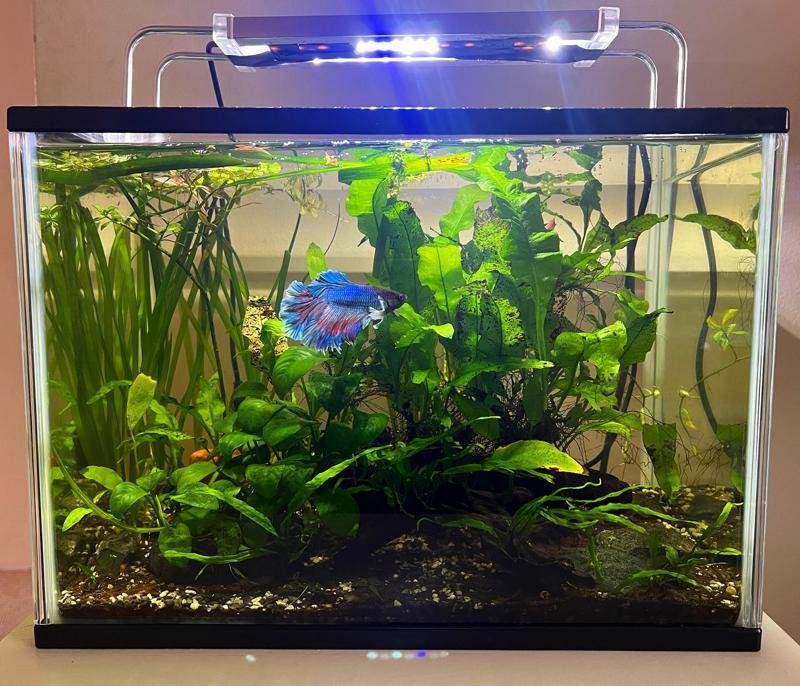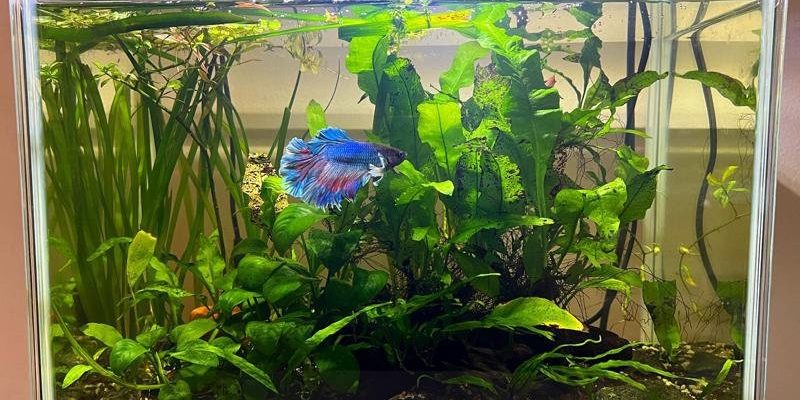
Now, when you think about an ideal tank setup for Betta fish, a few key factors come into play. These include tank size, water conditions, and décor. You might be wondering, “What size tank do they really need?” or “What kind of plants and decorations should I use?” Don’t worry; I’m here to break it down for you, step by step.
Understanding Tank Size for Betta Fish
When it comes to tank size, bigger really is better. A common misconception is that Betta fish can thrive in small bowls. While they can survive in tiny spaces, their well-being depends on having enough room to swim and explore. Ideally, you should opt for a tank that holds at least 5 gallons of water. Here’s why:
- More Space: A larger tank gives your Betta the freedom to swim and display natural behaviors.
- Better Water Quality: Bigger tanks tend to have more stable water conditions, which is crucial for a fish’s health.
- Less Stress: A spacious environment helps reduce stress, keeping your Betta happier and more vibrant.
If you’re tight on space, a 3-gallon tank can work in a pinch, but avoid anything less than that. Remember, Betta fish aren’t solitary creatures; they enjoy areas to explore and hide.
Water Conditions: Key Factors for Betta Wellness
Water quality is essential for your Betta’s health, and there are a few key things to keep in mind. First up is temperature. Bettas thrive in warmer waters, ideally around 76-82°F (24-28°C). If the water is too cold, your Betta might become lethargic or even sick. You can use a reliable aquarium heater to maintain the right temperature.
Next, let’s talk about pH levels. Bettas prefer a slightly acidic to neutral pH range of 6.5 to 7.5. Testing the water with a simple kit can help you monitor these levels. Keeping an eye on the pH ensures your Betta lives in a healthy environment.
Lastly, always put your fish in dechlorinated water. Chlorine is a common tap water additive that can be harmful to aquatic life. A water conditioner can remove chlorine and make tap water safe for your Betta.
Filtration: The Unsung Hero
Now, you might be wondering how to maintain clean water without turning your tank into a mini whirlpool. That’s where filtration comes in. A good filter will keep the water clean by removing toxins and uneaten food. However, it’s crucial to choose the right type of filter for your Betta, as they don’t do well with strong currents.
Here’s what to look for:
- Gentle Flow: Select a filter that provides adjustable flow settings, so you can customize the water movement.
- Filtration Type: Look for sponge or low-flow filters designed for smaller tanks. These options are less intimidating for your fish.
- Regular Maintenance: Make sure to clean the filter regularly to prevent any buildup that can lead to poor water quality.
With proper filtration, you can maintain a beautiful, stable habitat for your Betta.
Choosing the Right Décor
When it comes to décor, think of it as adding personality to your Betta’s home. Not only does it look great, but it also provides hiding spots and stimulation for your fish. Here are some popular decoration ideas:
- Live Plants: Adding live plants like Java Fern or Anubias not only enhances the look of the tank but also aids in oxygen production.
- Hiding Spots: Betta fish love to hide. Consider caves, tunnels, or ceramic ornaments that provide a cozy retreat.
- Substrate: A soft substrate, like sand or fine gravel, is ideal. It’s easier on your Betta’s delicate fins and allows plant roots to anchor well.
Make sure to avoid sharp decorations that could tear your Betta’s beautiful fins. A well-decorated tank can offer a rich environment for exploration and relaxation.
Creating a Stress-Free Environment
Just like humans, Betta fish can experience stress. A few simple adjustments can make your Betta’s home a sanctuary. Start by avoiding any bright lights that can overwhelm them. Instead, try using soft lighting, which mimics a more natural environment.
Another factor is the tank location. Choose a spot that’s away from loud noises, drafts, and direct sunlight. If you have other pets, consider putting a barrier or cover on the tank to keep your Betta safe from curious paws.
Also, if you’re thinking about adding tank mates, be cautious. Male Bettas are territorial and should be housed alone unless in a large setup with compatible fish. Always research any potential tank mates to ensure they won’t cause stress for your Betta.
Regular Maintenance for a Happy Betta
Keeping your Betta’s environment clean and healthy requires regular maintenance. This includes:
- Weekly Water Changes: Change about 20-30% of the water weekly. It helps in keeping toxins at bay.
- Monitoring Water Parameters: Regularly check the pH, temperature, and ammonia levels to ensure your Betta is living in safe conditions.
- Clean Décor and Substrate: Every month, remove decorations and clean them to avoid algae buildup.
By staying on top of maintenance, you’re not only keeping your Betta happy but also creating a thriving ecosystem that can be enjoyed for years.
Setting up the ideal tank for your Betta fish is a rewarding experience. With the right size tank, proper water conditions, and thoughtful décor, you can create a stunning environment that reflects both your style and your Betta’s needs. Remember to prioritize their happiness and well-being through regular maintenance and a stress-free atmosphere.
So, grab your gear and start designing that beautiful aquatic home. Your Betta will thank you with their vibrant colors and playful antics, making all the effort worth it!

